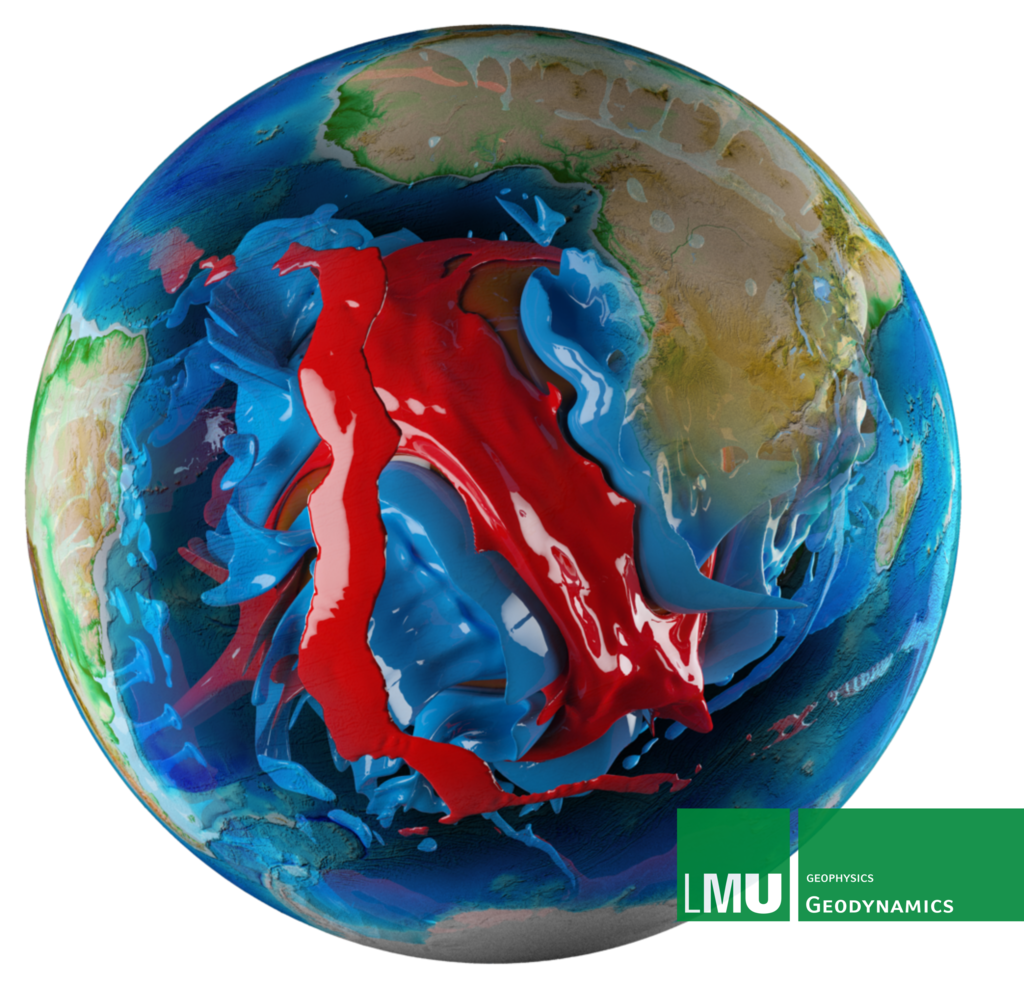Research Overview
In the Munich Geodynamics group, computational fluid dynamics and continuum mechanics form the backbone of our work. Together with high-performance computing (HPC), they allow us to simulate global mantle circulation at unprecedented resolution. Therefore, our group takes advantage of state-of-the-art computational technique and infrastructures (internally provided by our GeoComputing Group, externally through the Leibniz Supercomputing Centre, LRZ).
Structures in the mantle are shown as hot upwelling (red) and cold downwelling (blue) material. Click to start the video.
Over the last decade, we have developed several novel numerical and geodynamic modelling approaches. Specifically, we are at the forefront worldwide in the development of global geodynamic models that are able to reconstruct the evolution of the Earth’s mantle back in geologic time. By performing these innovative "mantle flow retrodictions", we do not only simulate the basic physical behaviour of our planet. More important, retrodictions allow us to exploit a variety of independent geophysical and geological observations in the modelling. One example is seismic data, which provides fundamental information about the interior structure of the Earth. On the one hand, the geophysical observations are linked to the underlying convective system of the mantle, which we exploit to constrain the numerical simulations. On the other hand, the geologic observations hold evidence of past flow states of the mantle that we use to test the time trajectories of our models.
This data-driven approach is powerful. It allows us to build models of the mantle that progressively become more earth-like. For this reason, a strong focus in our group is on collecting and processing the relevant Earth observations from many geoscientific fields, especially geology, geodesy, seismology and plate tectonics.
The results of these efforts have the potential for strong synergies across different research areas in the geosciences. This reaches from understanding large-scale geologic activity and surface tectonics, to estimating stress states in the lithosphere. The latter are required to link to earthquake mechanisms, and many other possible applications.

Our research can be grouped into the following three main topics:
